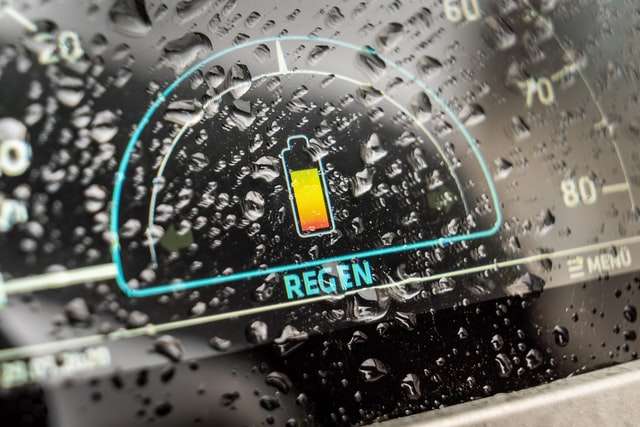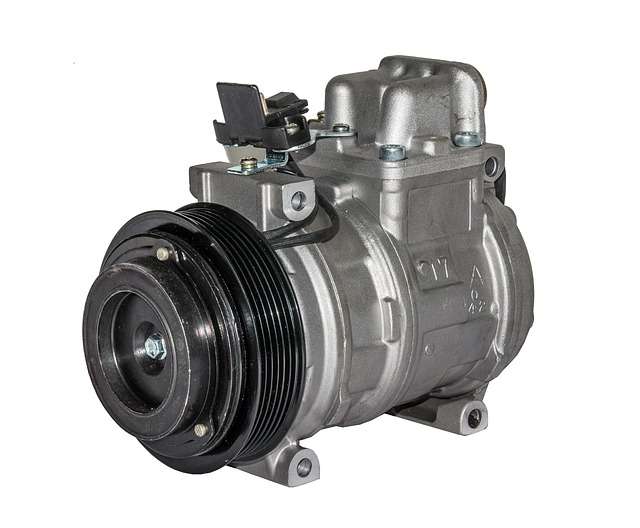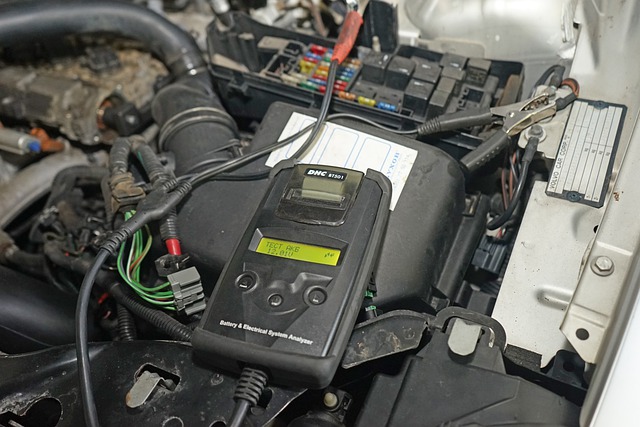Last Updated on October 16, 2023 by Chase Manhattan
Do you have a car battery that keeps dying no matter how much you charge it? You need to figure out what’s draining your battery and whether it’s being charged properly. Regularly charging the battery won’t solve the problem.
A car battery that keeps dying is a sign of a problem with the battery itself or a faulty alternator. There are three possibilities, either something is draining the battery, the battery is dead, or the battery is not being charged properly.
You should never trust a battery that keeps dying, it will die eventually. Most likely, next time you try to start the car and every time after that. Fortunately, diagnosing a problem with car batteries is relatively easy. Follow this guide to find out why your car battery keeps dying and how to fix it.
Quick Navigation
Why Does My Car Battery Keep Dying
Car batteries naturally deteriorate over time, but they can often fail preemptively if they are exposed to extreme conditions, frequent short trips, or the battery terminals are suffering from corrosion related problems.
Aside from this, your car battery keeps dying because:

- The battery is bad or dead. Car batteries have a lifespan of 3-4 years. After that, the capacity of the battery is decreased, and it starts to self-discharge. This can only happen if the battery is often drained flat. A completely dead battery can be recharged but it will lose its capacity. So, the battery will keep dying, regardless of whether you charge it or not. In these cases, you will need a new one.
- The alternator is not charging the battery. The car battery may be completely fine but the alternator is not charging it. When working correctly, the alternator is the part that’s charging the battery while the engine is on. The battery will eventually die because it’s not being charged. [Source] It will also not charge a dead battery.
- There is a drain. There may be a parasitic drain that you don’t know about. Electrical components that keep working after your car is turned off can be a possible cause, this can be as simple as leaving the headlights on or not closing a door so the dome lights stay on, or simply leaving the interior lights on. After market accessories are normally the first culprit of a parasitic draw.
- There are loose battery cables. Loose battery cables can create a weak connection, which creates more heat. More heat means that the connection will degrade faster and eventually your battery connections will break entirely! Proper care and regular maintenance is the key to avoiding this. Make sure that you tighten both the positive and negative terminals.
- There is too much battery acid. If you don’t maintain your battery, it will develop acid on the battery terminals. Over time, this acid will further eat away at the battery connections until there is no material left. Strong battery connections are very important because this is the last piece of the charging system. A corroded battery terminal can damage the battery to the extent that you’ll need a new one. Baking soda can be used as an easy removal method. Be sure to clean both positive and negative terminals.
- Extreme Temperatures. Large fluctuations in temperature can quickly kill a battery, particularly cold temperatures. This is why many people cannot start their car on the first cold day of winter. On the other end of the spectrum, extremely hot summer days can warp the lead plates that sit inside of batteries.
When the car is not running, the charging system is not active, so eventually, you’ll wind up with a dead car battery. Obviously, when your car battery is dead you won’t be able to start your car.
This is why jump starts work the way they do. The other car is using its battery voltage to give yours enough to start your car. Once your car is running, your charging system will eventually recharge the battery like new.
If your car will start with jumper cables, but dies immediately after, it may be a sign that your battery will not hold a charge. Do not try to jump start the car again, if the problem occurs again you run the risk of damage other electrical components.
These are the three things you need to check out to locate the problem, the electrical components, the battery, the starter motor and the alternator. Here’s how you can check that out.
[Related Article: The Complete Beginners Guide For Car Battery]
How Do You Know If You Have A Dead Car Battery
The most reliable way to find out whether your battery is okay is to perform a test with a multimeter. There are some things you can check out before that but these things are rarely conclusive.
Dimmed headlights or interior lights, you can’t start your car, battery sign on the dashboard, and weakened electrical system are all reasons that your car battery keeps dying.
However, the battery may be performing badly because it’s not being charged properly. You need to be sure that the problem is with your battery and not the alternator. Otherwise, replacing the battery won’t do anything. The new battery will die as well.
How To Test Car Batteries
To test a car battery, you will need a multimeter or a load tester. Make sure to get one or visit someone that has one. Here’s how to do it.
- Turn off the engine.
A car battery should be tested with a turned-off engine when it’s not being charged. - Make sure there are no loose battery connections
- Set the multimeter to 12 V.
- Connect the red clamp to the positive terminal.
- Connect the black clamp to the negative terminal.
- Read the measurements on the multimeter.
A car battery should have a voltage of 12.6 V or higher. Measurements below 12.6 V while the engine is off means that your car’s battery itself is dying.
[Related Article: How To Change A Car Battery]
How Do You Know If Your Alternator Is Bad

As mentioned, the alternator is responsible for switching to an AC current so the battery can be charged while the car is running.
The tricky thing is, with a brand-new battery, it will take some time until you notice that your alternator is bad. In contrast, if your battery is completely drained the alternator will not charge the battery at all. The only way to test an alternator is with a multimeter.
How To Test An Alternator
- Verify that all battery connections and battery cables are secured.
- Turn on the engine.
The alternator should be tested with a turned-on engine. Make sure there are no electrical components running that may be draining the battery. - Set the multimeter to 12 V.
- Connect the clamps to the battery terminals.
- Read the measurements on the multimeter.
A healthy charging system will provide a voltage of 13.7 V or higher to the car battery. If your car battery has a lower voltage of 13.7 V while the engine is running, the alternator is not charging the battery effectively. So, you will need to replace or fix the alternator.
How To Find Out What’s Draining My Car Battery
If your car battery dies and is new, and there’s no chance it’s dead. And, the alternator is charging the battery properly, then, something must be draining the battery. Most of the time, it’s obvious when something is draining your battery because it will be completely drained next time you try to start your car.
But there are some situations where a device can drain your battery without you even noticing it.
- The most common causes of a battery drain are the headlights, the radio, and added electronics devices(GPS).
Try to remember if you left the headlights on or if you drained your car battery completely flat. If so, your battery may be dead. Some batteries die after going flat. The capacity is decreased and the battery starts to self-discharge. So, even if you eliminate the drain, your battery will keep dying.
If the headlights are not the problem, most of the time some electrical device that you added is the culprit. This is a very common case with people that add GPS, a loud horn, strong sound systems, trunk lights, etc… when these items are installed incorrectly they will act as a parasitic draw.
The easiest way to find out what’s draining the battery is to plug off these devices one by one and see where the drain is coming from. For instance, if your battery drains, you remove the GPS, and your battery is not drained anymore, the GPS was the source of the drain.
Tip: Get a smart battery tender for your car. This device will keep the battery topped off when you are not using it.
You can also try using a multimeter. Turn on the engine, and remove the devices one by one. See with what device the voltage goes down below the recommended number.
Car Batteries Keep Dying But Alternator Is Good
If your car keeps dying, but the car’s electrical system is in good shape, I would recommend checking the ignition process before checking other air and fuel related components instead. It’s also wise to check the fuse box for the corresponding circuit for your charging system. Most vehicle will have a diagram inside of the fuse box for you to reference.
Related Question And Other FAQs
How Do You Stop A Car Battery From Draining When Not In Use
If a car battery is being drained by something when not in use, the drain needs to be eliminated, provided that the battery is healthy. You can also try using a battery tender to always keep your car battery fully charged. Try not to let your car sit for too long.
Can The Alternator The Drain Battery
The alternator can’t exactly drain car batteries. Instead, the alternator may not be charging the battery. It’s responsible for switching the current to AC so the battery can charge while you drive. If you have a bad alternator it will not transmit enough power back to your battery while the engine is running. It can be a faulty diode internal to the alternator, or in extreme cases the alternator belt has broken.
Will Frequent Short Trips Drain My Battery
Not always, but yes, frequent short trips can drain your battery if it is weak already. People don’t usually think about it, but naturally your driving habits will effect the wear on your car. This can be managed with routine maintenance with most cars.
What Is A Battery’s Lifespan
Typically a battery’s lifespan is about five years but there are other parts to the story. If you don’t drive your car frequently, or don’t take long trips, or have a new battery keep it attached to a battery tender. This will preserve the life of your battery over the long run.
Why Does My Car Keep Dying
Your car keeps dying either from the electrical system failing, which is specifically a bad battery or the charging system is not functioning properly. If your battery and alternator check out, it is likely to be another issue.
What Equipment Do I Need For A Weak Battery
If you suspect that you have a weak battery, I highly suggest you keep battery connectors, like jumper cables, in your glove box. It’s likely that you’ll find yourself in a sticky situation when your car battery dies.
What Is Parasitic Drain
A parasitic drain is anything that is creating a battery drain without you knowing. It is typically not battery problems specifically, but is rather an electrical component that is incorrectly installed, or is active when its not supposed to be. This can be something like an alarm system or a gps tracker.
How To Clean Battery Terminals
You do not need specialized tools to clean your batteries terminals, instead it can easily be done with baking soda and a stiff bristle brush.

